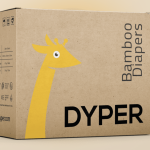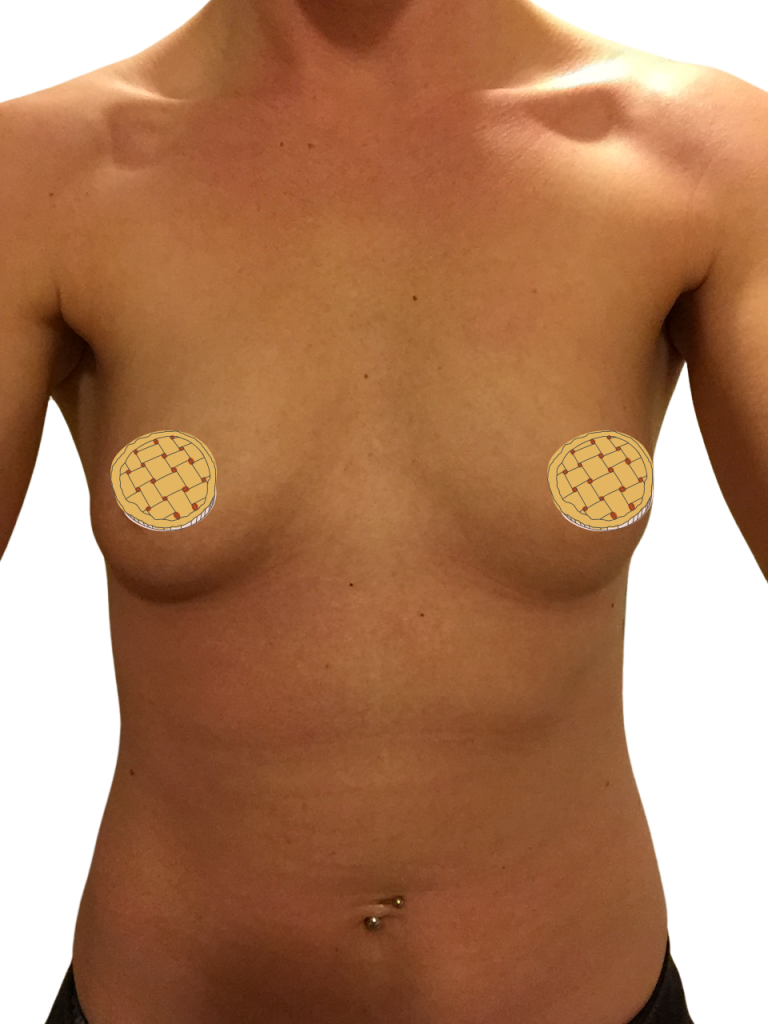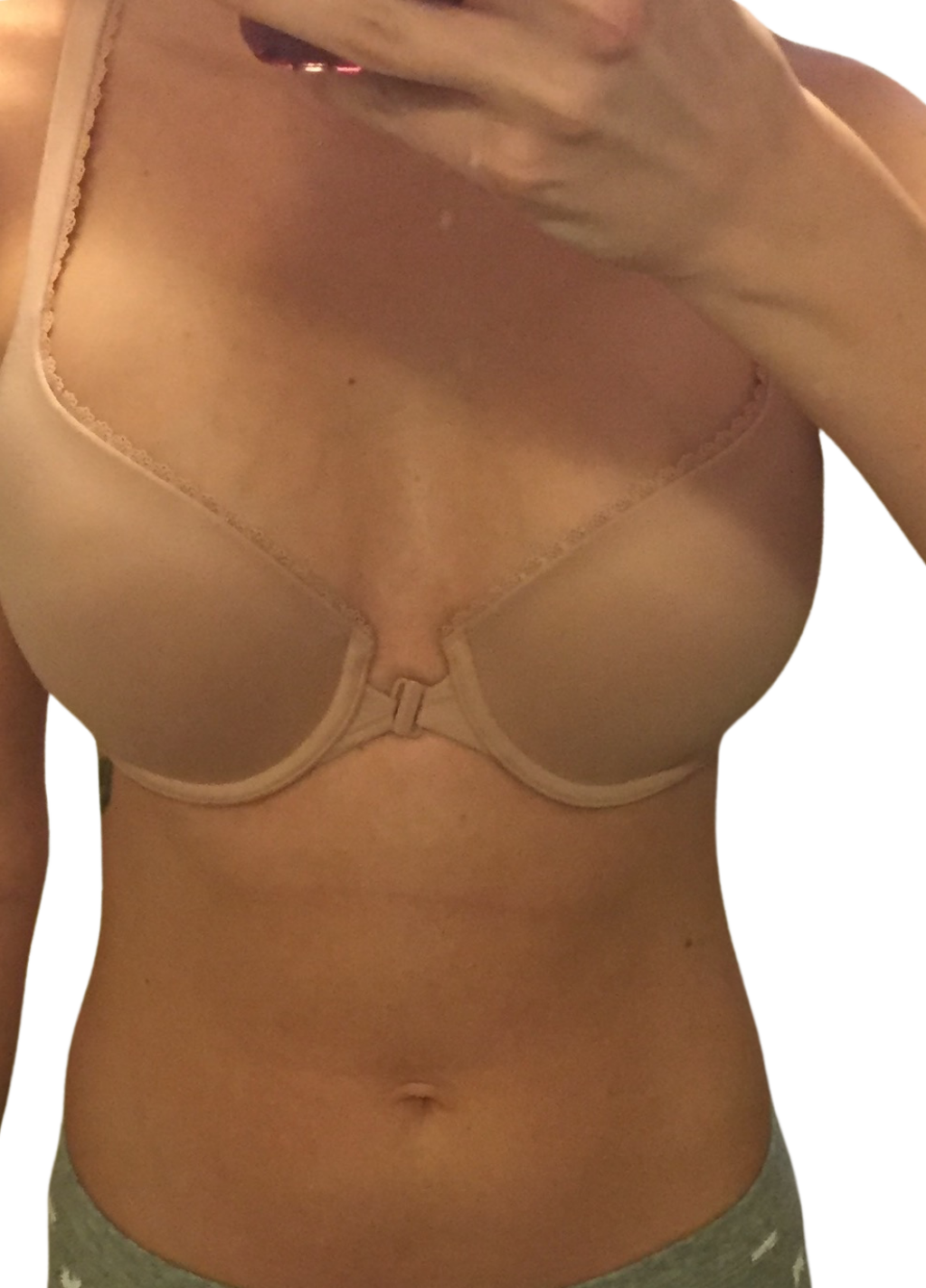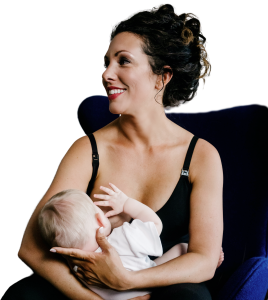The story of successful breastfeeding after breast implants begins long ago. My tumultuous relationship with my breasts started when I was 9 years old. I hadn’t even entered puberty, but I was already planning to get breast implants and wake up one day with the boobs of my dreams. Yes, it is very sad that this is the messaging little girls receive in our country.
Every woman in my family had huge boobs, and I figured I would, too. Any day now!
You can imagine my disappointment when I was a “late bloomer.” And — double disappointment — I never got the boobs I wanted.
My AAs and I never had a positive relationship. When I had my first baby, my milk came in, and my breasts swelled to an extremely painful D-cup. The engorgement was unbearable, and my breastfeeding experience started out terribly.
I was recovering from a C-section, and my baby had a lip tie, jaundice, and sugar issues. In the hospital, the lactation consultant did what she could, but my baby continued to scream at my breast. I was using a nipple shield and had a partner who didn’t support breastfeeding… or anything for that matter.
With all of those trials, I still breastfeed my son for 10-months, occasionally supplementing with formula. I thought, “It’s just par for the course with these boobs. They’re not enough. They’ve never been enough.”
Looking back now and thinking about how I breastfed for 10-months after that terrible start to breastfeeding, I should’ve thrown a victory party. Instead, I was trapped by thinking that my boobs had let me down again.

Deciding to Permanently Stuff My Bra...breast implants
I eventually divorced the unsupportive man, swearing off men and future babies for good. In January 2017, after my first baby turned 3, I decided I was too young to have saggy AA cups (deflated after breastfeeding), saved my dimes, and stuffed my bra permanently.


Yep, I got breast implants.
It was something I wanted to do for me. My breasts had been a mental burden since I was 9-years-old. I told the surgeon I didn’t plan on having more children, but he still warned me, “If you meet somebody and want to have a baby, you need to wait at least a year or two after getting the breast implants.”
He also explained that he would do the incision underneath the breasts and place the implants behind the muscle. I was strong in my conviction to remain single and having only one child, so I said, “Sounds great. Let’s do this.”
Funny story: One week after my augmentation, I met my current husband (who incidentally isn’t even a “boob-guy” haha). We ended up getting married, and on Christmas Eve 2018, we had a baby girl, who I successfully breastfed with my new-ish breasts. Life happens!
My husband loves all of me no matter what my body looks like, but I still don’t regret getting breast implants. I actually really like my boobs. It’s just sad that it took years of negotiating that relationship. And in case you were wondering, my augmented breasts look fine after breastfeeding my second baby for almost a year. They are not down to my belly button.
What You Need to Know About Breastfeeding After Implants
If you’re considering breast implants, the most important question to ask before surgery is, “Why am I doing this?” It should be for you, not a partner or anyone else. Also, examine your relationship with your breasts. Are you worried they’re not enough or they somehow make you not enough?
When I think about my struggles with feeling like my boobs and I were not enough, I probably could have explored that further before getting implants. The first year after the surgery I did have some mixed feelings about my decision, which I now know is very normal after cosmetic surgery. Those mixed feelings eventually resolved, and I now have no regrets. Perhaps it was my husband’s insistence that my body was great or maybe it was my new appreciation of my ability to breastfeed that helped me begin to love my breasts. Still, any person should be empowered in any decision they make about their body.
The ideal situation is to wait until you’re done having babies, then get breast implants if that’s what you want. But when it comes to the physical changes related to breastfeeding after implants, here are 6 questions and answers to consider:
1.) What is the best incision location for breast implants if I want to breastfeed later?
If you think you might breastfeed in the future, it’s best to have the implant placed through an incision under the breast. It leaves the most noticeable scar, but it’s the safest and best option for preserving the ducts and nerves in the breast. See a great video of the type of surgery I got HERE.
2.) Will I have supply issues when breastfeeding after breast implants?
You might have supply issues, but it probably isn’t from the implant. It’s probably from damage during the surgery or it could be from having very little breast tissue to begin with! Many women with hypoplastic breasts (minimal breast tissue that doesn’t respond to hormonal changes of pregnancy) choose to get implants and would have had supply issues anyway (not always).
3.) How long should I wait to get pregnant after breast implants?
It’s best to wait at least a year for your implants to settle and the capsule surrounding the implant to stabilize before getting pregnant. This is to prevent your body from rejecting the implant and causing damage to your breast.
Another reason to wait is because you will lose nipple sensation for a while after the implants. When it comes back, your nipples can feel like pins and needles — very sensitive! I had no implant-related pain, but breastfeeding six months after surgery would’ve been nearly impossible because of super sensitive nipples.
4.) Will I be able to hand express/pump with implants?
It can be slightly more difficult to hand express with implants, because they’re not as pliable as breast tissue. It’s definitely not impossible! However, if you didn’t have a lot of breast tissue to begin with, there may not be a lot to work with. It’s not as easy to identify the lobes and “get in there”. Pumping is perfectly fine with implants.
5.) Does silicone get into breastmilk?
We don’t know for sure if silicone passes into breastmilk, but studies have shown that silicon, one ingredient in silicone, does pass into human milk. However, there is about 100 times more silicon in formula. Some surgeons will use saline implants upon request, but they are less common because they’re more likely to rupture.
Are there any risks when breastfeeding after implants?
After any breast surgery, whether it’s an augmentation, a reduction, or an abscess removal, there is a small chance that your milk will come in but won’t be able to get out. You’ll want to confirm that your milk has an outlet.
During pregnancy, if you leak or can hand express a little bit of colostrum, then you should be fine to breastfeed. Some women don’t leak or produce anything during pregnancy — either is normal! After your baby is born, try to hand express and get some milk out prior to hyper-stimulating your breasts. Depending on the incisions made during breast surgery, the surgeon could’ve cut through milk ducts. If that’s the case, milk will not be able to get out, and that’s a serious problem as your milk begins to build up in your breasts. This is typically more common in breast REDUCTION surgeries.
6.) How Can I Appreciate My Body?
If you have breast surgery and decide you want to breastfeed, it’s important to roll with the experience and see what happens. You can’t beat yourself up about your decision to get implants, especially if things don’t go as well as you expected. You don’t know if that’s from the surgery or a previously underlying condition.
I know one mom who could not breastfeed at all on one breast. It was a sensation issue; one nipple was dead, and the supply didn’t come on that side. Her baby breastfed on one breast for an entire year! It doesn’t have to be all or nothing.
For many parents, breastfeeding is the point in your life where you are forced to examine your relationship with your breasts. Without even realizing it, there could’ve been a subconscious message that has been perpetuating negative feelings about them from a young age (like I had). These negative feelings affect us from the time we’re young. There are expectations about what we’re supposed to be as women before we even develop on our own. It’s a bunch of crap.
For years, perhaps you’ve been perfecting the art of making your breasts look good (the perfect push-up bra) or learning how to perform certain sexual acts with them. You’ve been conditioned to have all these feelings for 20 years, and now your breasts can do this amazing thing — create milk to keep a human alive! It can be so strange to adjust from a hyper-sexualization of your breasts to a nurturing appreciation of them.
Basically, what I’m saying is: Rock your boobs. You do what you want. Your boobs, your rules!
If you need any type of breastfeeding support, sign up for Feed Your Baby University, my online breastfeeding class specifically for troubleshooting. It’s my evidence-based method to feel confident about breastfeeding, pumping, and bottle feeding without nipple pain, supply worries, or exhaustion. You can also schedule a private consult with me at your convenience HERE if you need some one-on-one care.






